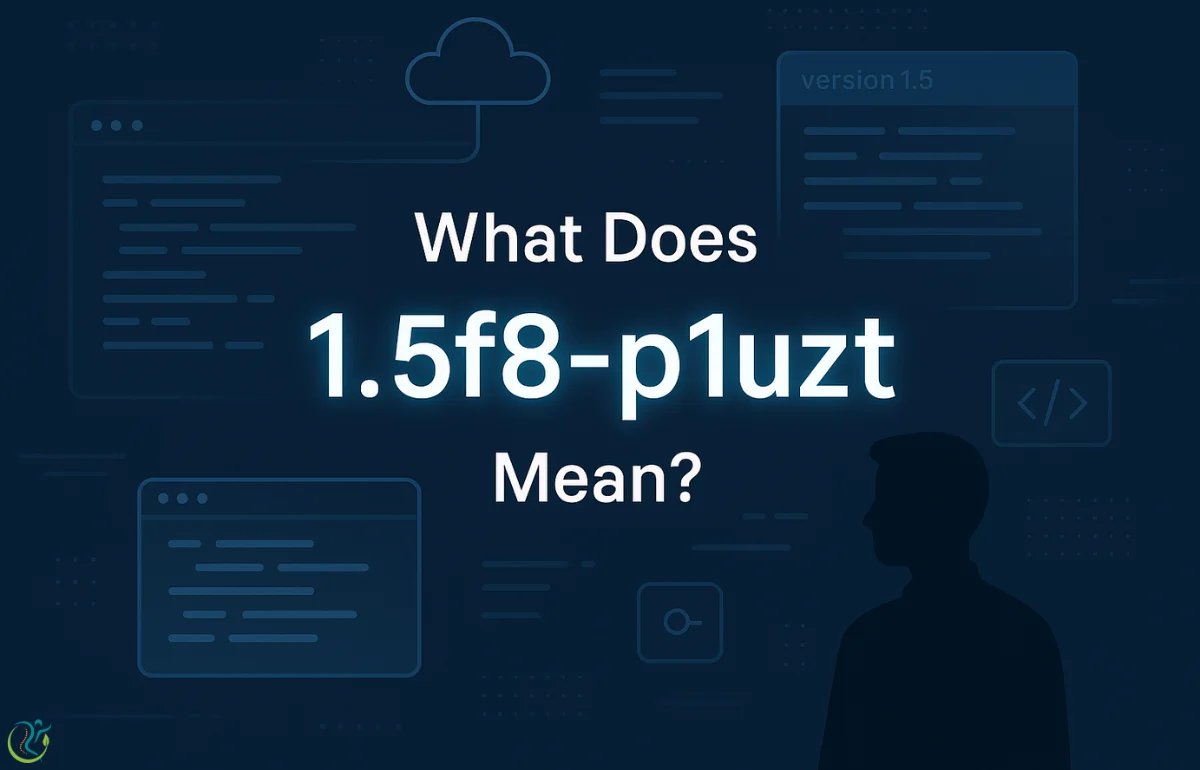
In today’s fast-paced tech world, mysterious strings like 1.5f8-p1uzt can pop up in unexpected places—logs, URLs, file names, or software builds. While at first glance it may look like a random jumble of letters and numbers, there’s often more to such identifiers than meets the eye. These cryptic codes can carry specific meanings, and understanding them can be essential for developers, analysts, IT professionals, and even curious users.
In this article, we’ll break down what 1.5f8-p1uzt could represent, where you’re likely to see similar identifiers, and how to interpret or investigate them when they appear.
Understanding the Basics of 1.5f8-p1uzt
Let’s start by analyzing the format of 1.5f8-p1uzt. It combines numbers, lowercase letters, and a hyphen—suggesting a structured yet encoded format. Such identifiers typically fall into one of several categories in software systems:
Unique Identifiers (UIDs)
Version numbers
Hash values
System-generated tokens or session IDs
Each of these serves a distinct purpose in digital systems. Knowing which one you’re dealing with depends heavily on the context in which the identifier appears.
Possible Interpretations of 1.5f8-p1uzt
Unique Identifier (UID)
Identifiers like 1.5f8-p1uzt are often used to distinguish a unique object in a database or software environment. Think of it as a barcode for digital elements: database entries, system users, or configuration profiles. These strings are usually auto-generated and ensure that every item can be referenced precisely without confusion.
Versioning Identifier
The prefix “1.5” in 1.5f8-p1uzt might indicate a software version or API iteration. It’s common in continuous integration pipelines or package releases, especially where frequent updates are pushed with tracking metadata appended to a version number.
Example:
Software builds like v1.5-f8p1uzt might use such formatting to denote a stable release followed by a commit hash or internal code name.
Hash or Checksum Segment
Although 1.5f8-p1uzt doesn’t resemble common hash types like SHA256 or MD5 in length or character range, it could represent a custom hash, partial hash, or truncated identifier used internally. Hashes are typically employed for file integrity, password security, and version tracking in Git or blockchain systems.
Token in Complex Systems
In many cloud-based or cryptographically secured platforms, strings like this serve as API tokens, encrypted keys, or URL parameters. Their appearance is often a design choice to obfuscate and protect the underlying data while still enabling traceability.
Common Places You Might See Identifiers Like 1.5f8-p1uzt
Let’s explore where such codes often show up and what they might signify in those environments.
| Context | Possible Role of 1.5f8-p1uzt | Example Use Case |
|---|---|---|
| Databases | Primary key, transaction ID, or object reference | Distinct row identifier in PostgreSQL |
| APIs | Session token or request tracking ID | Trace logs for debugging HTTP responses |
| Version Control | Build label or commit ID fragment | GitHub actions or CI/CD pipelines |
| Cloud Services | Resource identifier (e.g., VM, container, or blob) | AWS resource ID for a Lambda function |
| Web URLs | Tracking code or file download token | Query string parameters in SaaS applications |
| Gaming Systems | Player ID or asset UUID | Internally identifying skins or sessions |
How to Decode or Understand 1.5f8-p1uzt
Without specific documentation, it’s hard to crack the exact meaning of a string like 1.5f8-p1uzt. But there are a few strategies that professionals use to investigate:
1. Look at the Context
Where did you find this identifier? Was it inside a server log? A product download link? The environment around the code gives clues.
2. Cross-Reference With Known Patterns
Match the structure against identifiers you’re familiar with. For example, does the “1.5” align with any of your software’s version numbers? Is “p1uzt” part of an encoded hash?
3. Review Documentation
Refer to any available system documentation, software changelogs, or schema definitions that explain the naming conventions being used.
4. Reach Out to the Developer Team
If this identifier is part of a third-party tool or platform, the support or developer forums may have discussed similar patterns before.
5. Use Reverse Lookup Tools
Online reverse image search, hash identification tools, or deobfuscators may help if you suspect the string includes encoding or hashing components.
Why Cryptic Identifiers Matter
These identifiers—despite looking meaningless—play a crucial role in software organization, traceability, and performance optimization. Systems at scale rely on short, unique, non-conflicting keys to ensure data consistency, security, and quick retrieval.
They also reduce the chance of user error and system confusion by eliminating descriptive overlaps. For example, it’s much safer to refer to a file as 1.5f8-p1uzt than something vague like invoice-final2-new.zip.
Security and Privacy Implications
Identifiers like 1.5f8-p1uzt could reveal information if logged publicly. If tied to user sessions, tokens, or API keys, it’s essential to treat them as sensitive. Never post them online without understanding what they represent.
According to the OWASP Foundation, secure handling of identifiers is a key part of protecting web applications from broken access control or information leakage (OWASP Top 10, 2023).
Conclusion: Don’t Fear the Identifier
The next time you encounter a code like 1.5f8-p1uzt, don’t dismiss it as random noise. With a bit of digging, observation, and context, you can often uncover its purpose and significance. These identifiers are designed to be compact and meaningful, just not in plain English.
If you’re unsure about one you’ve found, document your environment, research the system, and consult with developers or technical support. Sometimes, understanding even one string can help you troubleshoot faster, secure your system better, or improve your software workflow.
Want to decode similar identifiers in your systems? Start by reviewing your logs and build tools—there’s more structure in those cryptic codes than you might think.

Dear Readers, I’m Salman Khayam, the writer and founder of this blog, dedicated to bringing you valuable insights across a variety of topics. From dental and mental health to personal development, beauty, skincare, hair care, nutrition, fitness, and exercise, my goal is to empower and inspire through well-researched, engaging content.
